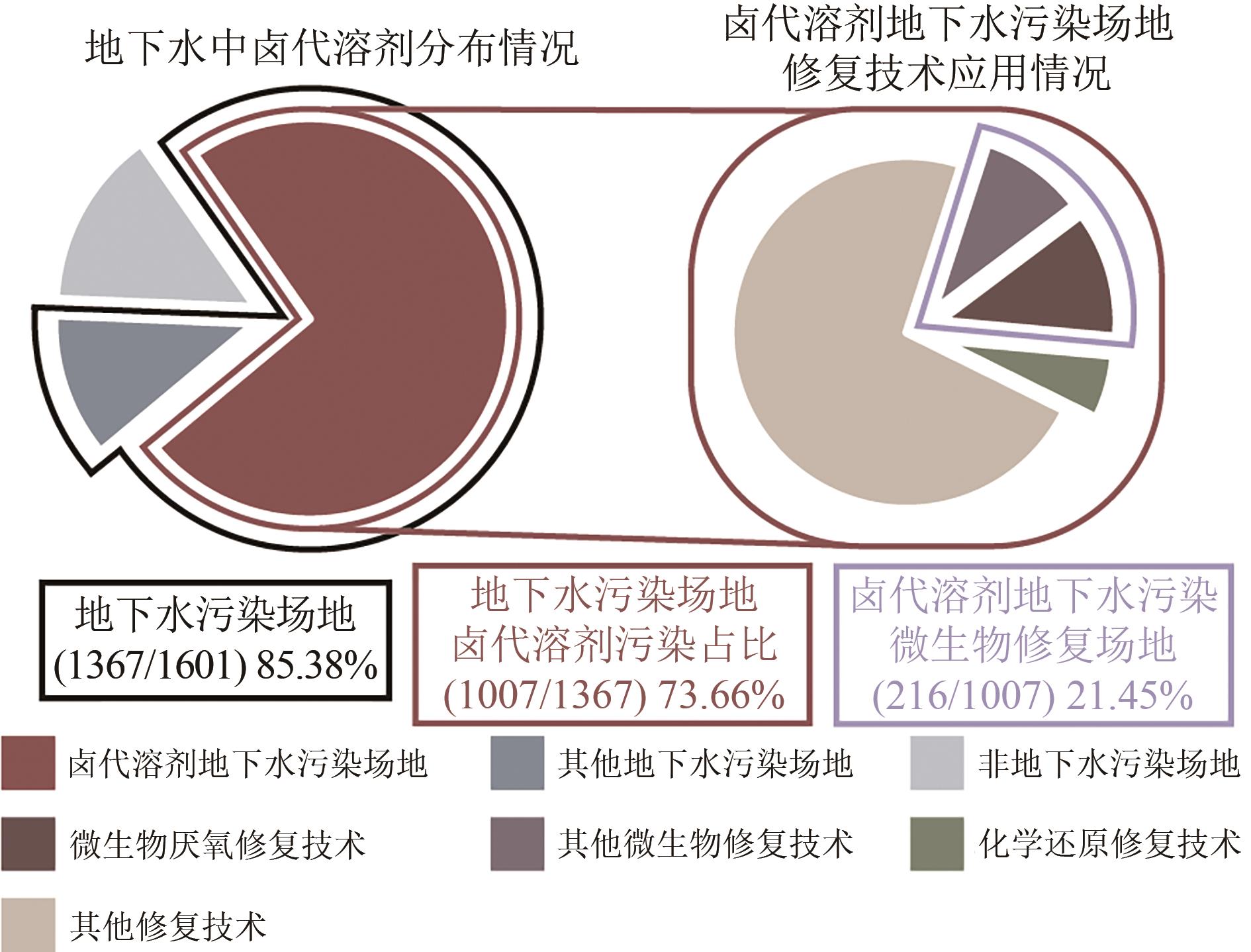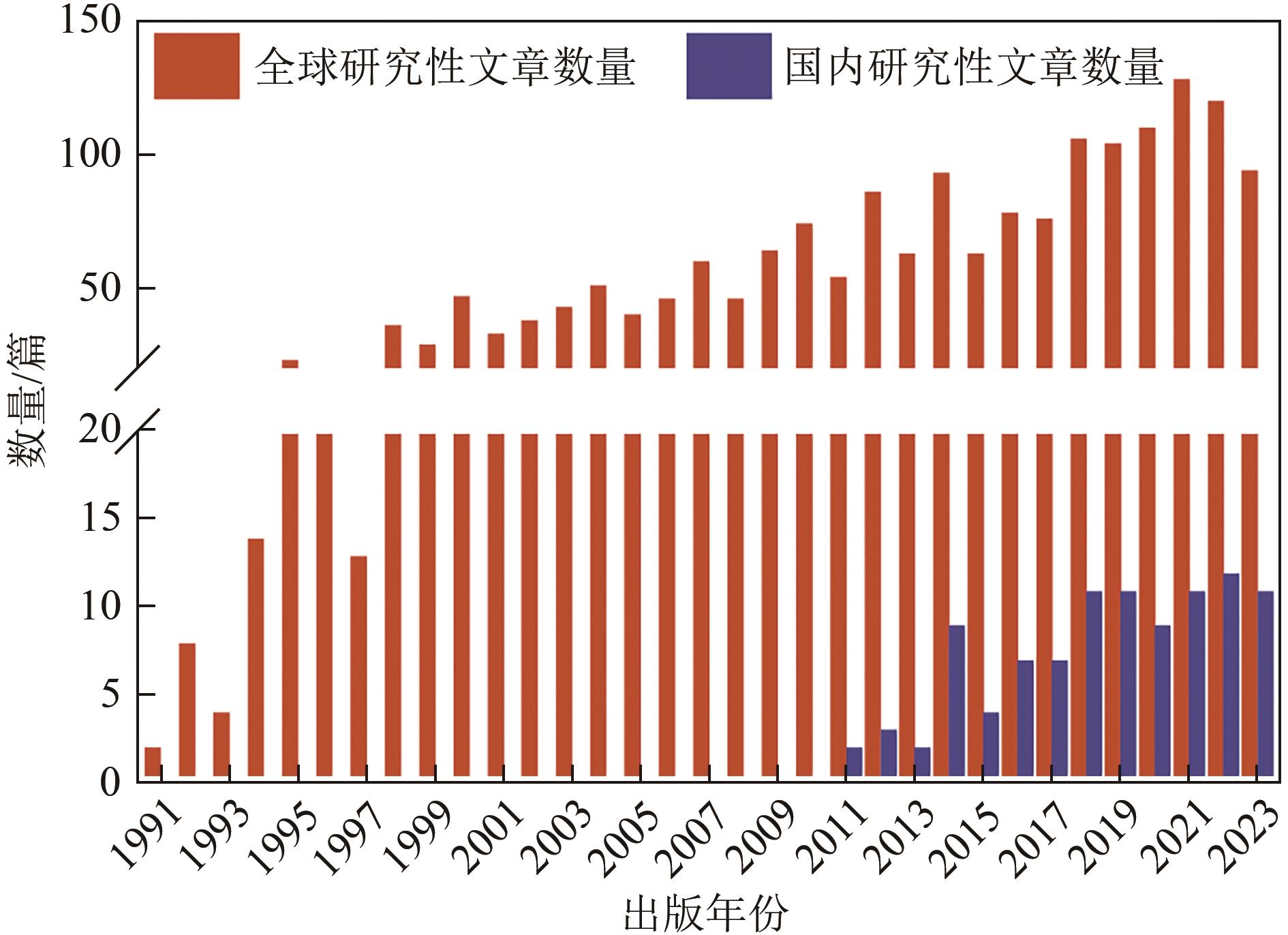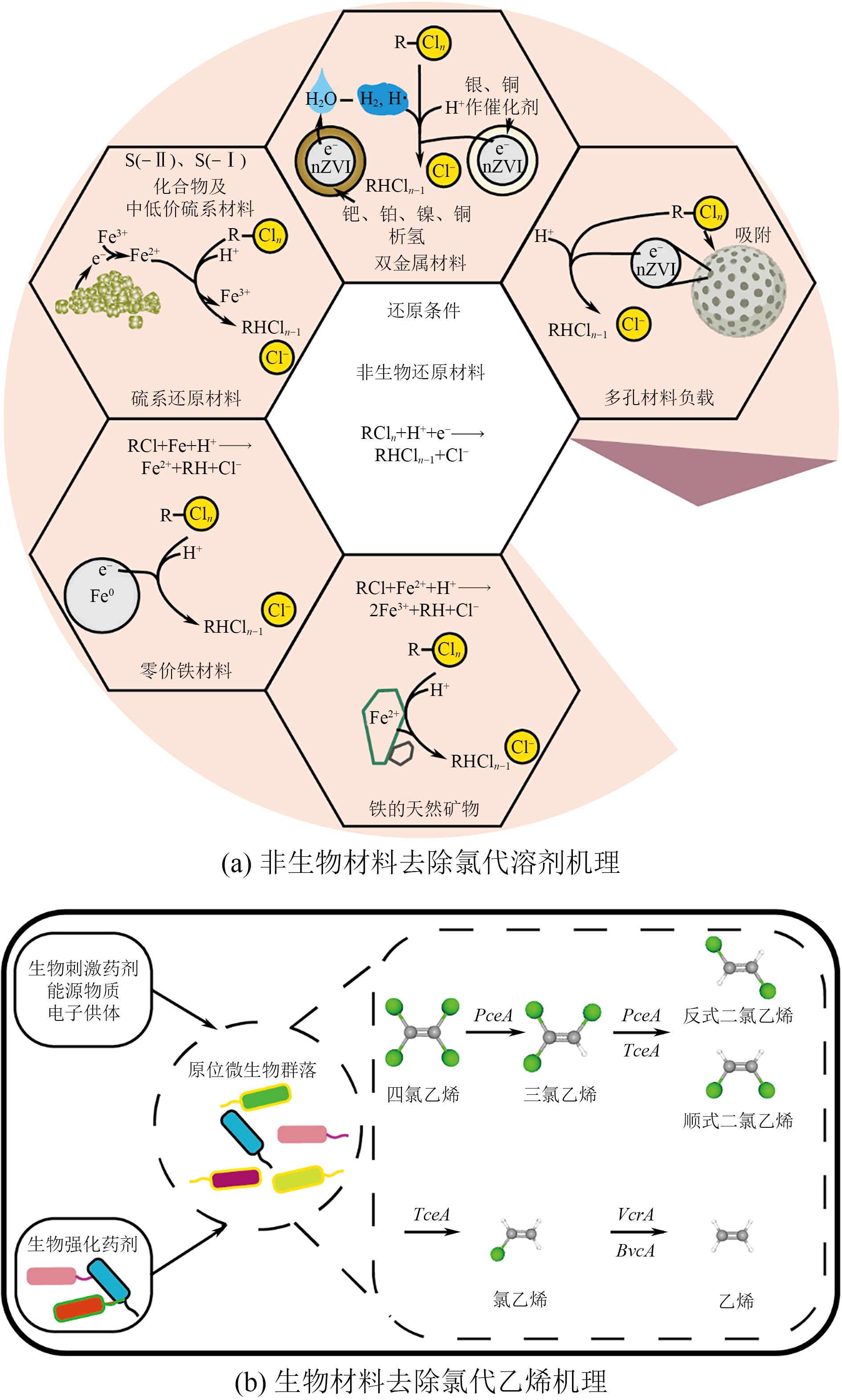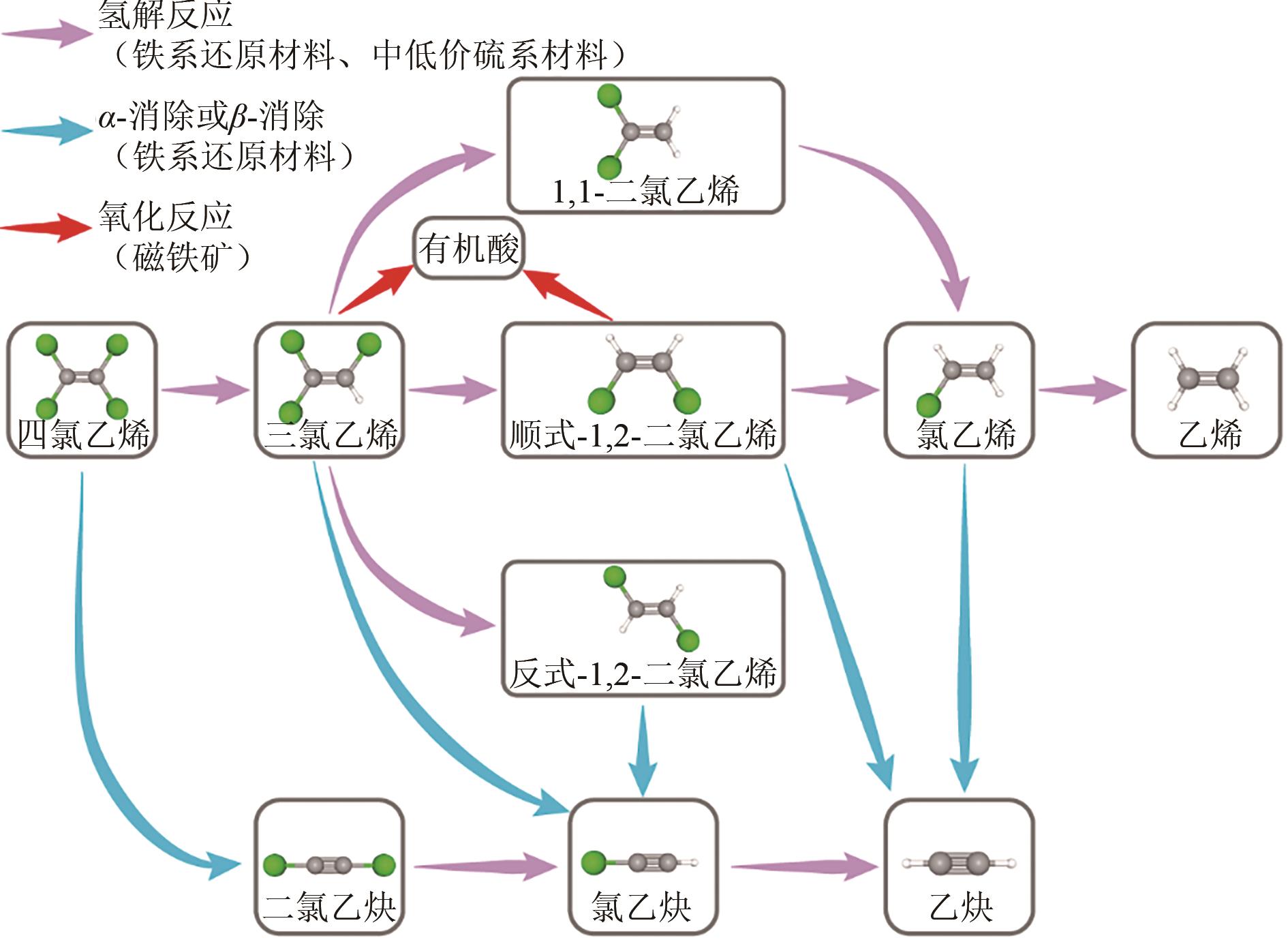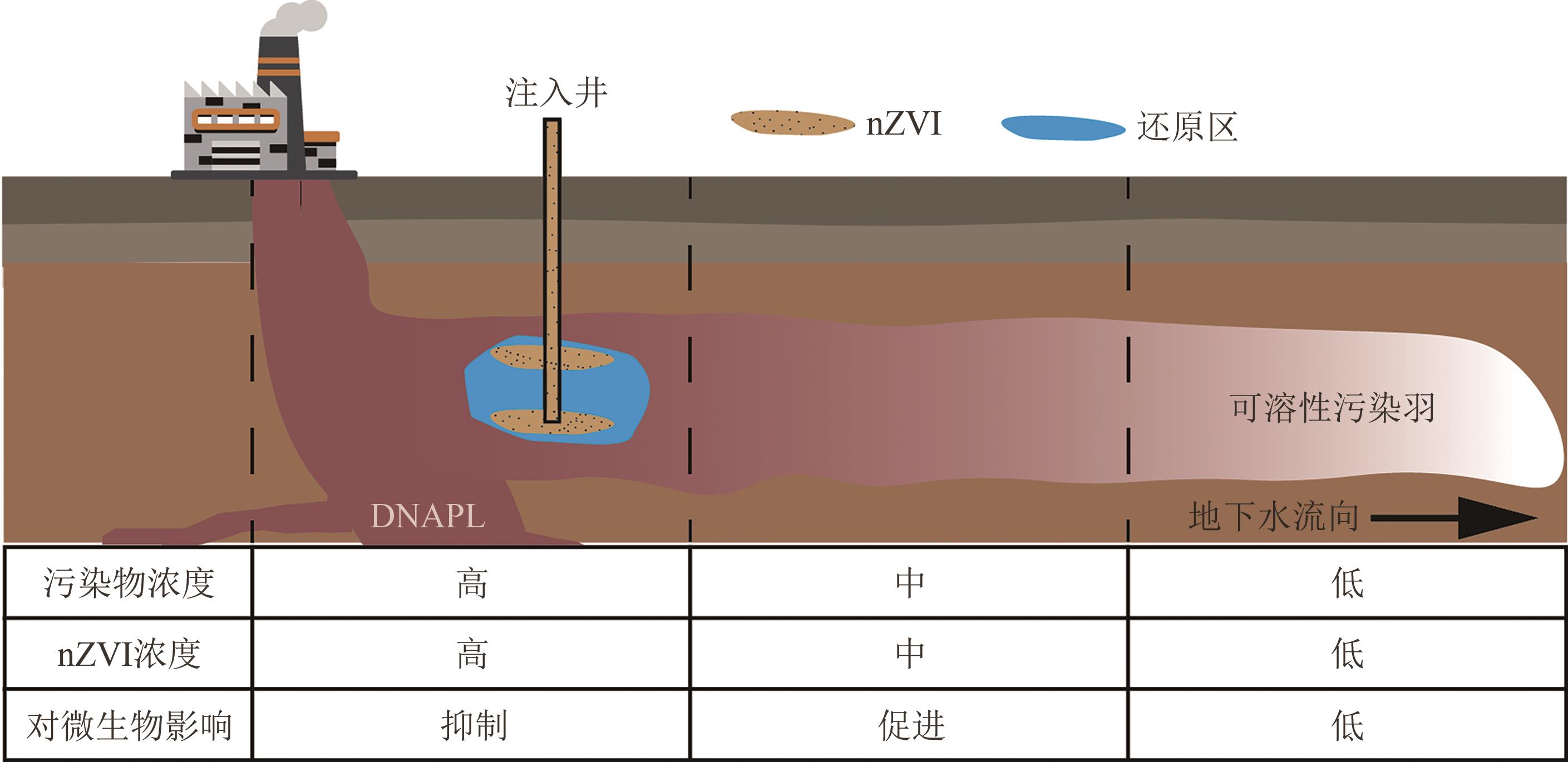| 1 |
US EPA. Remedy component data for decision documents by media, FYs 1982—2021 (Final NPL, Deleted NPL, and Superfund Alternative Approach Sites)[EB/OL]. (2023-12-18) [2023-12-27]. .
|
| 2 |
环境部, 国土资源部, 住房和城乡建设部, 等. 华北平原地下水污染防治工作方案[EB/OL]. (2013-03-08) [2023-12-27]. .
|
| 3 |
姜建军. 中国地下水污染现状与防治对策[J]. 环境保护, 2007, 35(19): 16-17.
|
|
JIANG Jianjun. Present situation of groundwater pollution in China and its prevention and control countermeasures[J]. Environmental Protection, 2007, 35(19): 16-17.
|
| 4 |
汤灵容. 土壤和地下水中挥发性氯代烃污染的快速检测技术[D]. 上海: 上海师范大学, 2011.
|
|
TANG Lingrong. Rapid detection technology of volatile chlorinated hydrocarbon pollution in soil and groundwater[D]. Shanghai: Shanghai Normal University, 2011.
|
| 5 |
CALLAHAN M A. Water-related environmental fate of 129 priority pollutants[M]. Washington DC: US Environmental Protection Agency, 1980: 486.
|
| 6 |
周文敏, 傅德黔, 孙宗光. 水中优先控制污染物黑名单[J]. 中国环境监测, 1990, 6(4): 1-3.
|
|
ZHOU Wenmin, FU Deqian, SUN Zongguang. Blacklist of priority pollutants in water[J]. Environmental Monitoring in China, 1990, 6(4): 1-3.
|
| 7 |
GILLHAM Robert W, O’HANNESIN Stephanie F. Enhanced degradation of halogenated aliphatics by zero-valent iron[J]. Groundwater, 1994, 32(6): 958-967.
|
| 8 |
GLAVEE George N, KLABUNDE Kenneth J, SORENSEN Christopher M, et al. Chemistry of borohydride reduction of iron (Ⅱ) and iron (Ⅲ) ions in aqueous and nonaqueous media. formation of nanoscale Fe, FeB, and Fe2B powders[J]. Inorganic Chemistry, 1995, 34(1): 28-35.
|
| 9 |
MAYMÓ-GATELL X. Dehalococcoides ethenogenes strain 195: A novel eubacterium that reductively dechlorinates tetrachloroethene (PCE) to ethene[M]. Ithaca: Cornell University, 1997.
|
| 10 |
LI Fei, DENG Daiyong, ZENG Lingke, et al. Sequential anaerobic and aerobic bioaugmentation for commingled groundwater contamination of trichloroethene and 1,4-dioxane[J]. Science of the Total Environment, 2021, 774: 145118.
|
| 11 |
PANKOW James F, CHERRY John A. Dense chlorinated solvents and other DNAPLs in groundwater[M]. Portland: Waterloo Press, 1996: 522.
|
| 12 |
KELL George S. Density, thermal expansivity, and compressibility of liquid water from 0℃ to 150℃: Correlations and tables for atmospheric pressure and saturation reviewed and expressed on 1968 temperature scale[J]. Journal of Chemical and Engineering data, 1975, 20(1): 97-105.
|
| 13 |
GERHARD Jason I, PANG Tiwee, KUEPER Bernard H. Time scales of DNAPL migration in sandy aquifers examined via numerical simulation[J]. Ground Water, 2007, 45(2): 147-157.
|
| 14 |
KUEPER Bernard H, ANNABLE M D. Chlorinated solvent source zone remediation[M]. New York: Springer New York, 2014: 6-8.
|
| 15 |
US EPA. Contaminant of concern data for decision documents by media, FYs 1982—2021 (Final NPL, Deleted NPL, and Superfund Alternative Approach Sites)[EB/OL]. (2023-12-18) [2023-12-27]. .
|
| 16 |
ELSNER Martin, HOFSTETTER Thomas B. Current perspectives on the mechanisms of chlorohydrocarbon degradation in subsurface environments: Insight from kinetics, product formation, probe molecules, and isotope fractionation[M]. Washington DC: American Chemical Society, 2011: 407-439.
|
| 17 |
National Center for Biotechnology Information. PubChem Compound Summary for CID 6325, Ethylene[EB/OL]. (2004-09-16) [2024-03-06]. .
|
| 18 |
National Center for Biotechnology Information. PubChem Compound Summary for CID 31373, Tetrachloroethylene[EB/OL]. (2004-09-16) [2024-03-06]. .
|
| 19 |
National Center for Biotechnology Information. PubChem Compound Summary for CID 6575, Trichloroethylene [EB/OL]. (2004-09-16) [2024-3-6]. .
|
| 20 |
National Center for Biotechnology Information. PubChem Compound Summary for CID 638186, trans-1,2-Dichloroethylene[EB/OL]. (2005-03-26) [2024-3-6]. .
|
| 21 |
National Center for Biotechnology Information. PubChem Compound Summary for CID 643833, cis-1,2-Dichloroethylene[EB/OL]. (2005-03-26) [2024-03-06]. .
|
| 22 |
National Center for Biotechnology Information. PubChem Compound Summary for CID 6338, Vinyl Chloride[EB/OL]. (2004-09-16) [2024-03-06]. .
|
| 23 |
GORSKI Christopher A, NURMI James T, TRATNYEK Paul G, et al. Redox behavior of magnetite: Implications for contaminant reduction[J]. Environmental Science & Technology, 2010, 44(1): 55-60.
|
| 24 |
AYALA-LUIS Karina B, COOPER Nicola G A, KOCH Christian Bender, et al. Efficient dechlorination of carbon tetrachloride by hydrophobic green rust intercalated with dodecanoate anions[J]. Environmental Science & Technology, 2012, 46(6): 3390-3397.
|
| 25 |
ELSNER Martin, SCHWARZENBACH René P, HADERLEIN Stefan B. Reactivity of Fe (Ⅱ)-bearing minerals toward reductive transformation of organic contaminants[J]. Environmental Science & Technology, 2004, 38(3): 799-807.
|
| 26 |
FERREY Mark L, WILKIN Richard T, FORD Robert G, et al. Nonbiological removal of cis-dichloroethylene and 1,1-dichloroethylene in aquifer sediment containing magnetite[J]. Environmental Science & Technology, 2004, 38(6): 1746-1752.
|
| 27 |
YIN Xin, HUA Han, DYER James, et al. Degradation of chlorinated solvents with reactive iron minerals in subsurface sediments from redox transition zones[J]. Journal of Hazardous Materials, 2023, 445: 130470.
|
| 28 |
DARLINGTON Ramona, LEHMICKE Leo, ANDRACHEK Richard G, et al. Biotic and abiotic anaerobic transformations of trichloroethene and cis-1,2-dichloroethene in fractured sandstone[J]. Environmental Science & Technology, 2008, 42(12): 4323-4330.
|
| 29 |
DARLINGTON Ramona, LEHMICKE Leo G, ANDRACHEK Richard G, et al. Anaerobic abiotic transformations of cis-1,2-dichloroethene in fractured sandstone[J]. Chemosphere, 2013, 90(8): 2226-2232.
|
| 30 |
HE Y, SU C, WILSON J, et al. Identification and characterization methods for reactive minerals responsible for natural attenuation of chlorinated organic compounds in ground water[R]. Washington DC: US Environmental Protection Agency, 2010, R-09/115.
|
| 31 |
ARNOLD William A, Lynn ROBERTS A. Pathways and kinetics of chlorinated ethylene and chlorinated acetylene reaction with Fe(0) particles[J]. Environmental Science & Technology, 2000, 34(9): 1794-1805.
|
| 32 |
National Center for Biotechnology Information. PubChem Compound Summary for CID 6366, Vinylidene chloride[EB/OL]. (2005-03-27) [2024-03-06]. .
|
| 33 |
National Center for Biotechnology Information. PubChem Compound Summary for CID 24227, Dichloroacetylene[EB/OL]. (2005-03-27) [2024-03-06]. .
|
| 34 |
National Center for Biotechnology Information. PubChem Compound Summary for CID 68975, Chloroethyne[EB/OL]. (2005-03-27)[2024-03-06]. .
|
| 35 |
National Center for Biotechnology Information. PubChem Compound Summary for CID 6326, Acetylene[EB/OL]. (2004-09-16) [2024-03-06]. .
|
| 36 |
HE Y T, WILSON J T, SU C, et al. Review of abiotic degradation of chlorinated solvents by reactive iron minerals in aquifers[J]. Groundwater Monitoring & Remediation, 2015, 35(3): 57-75.
|
| 37 |
TRATNYEK P G, Scherer M M, Johnson T L, et al. Permeable reactive barriers of iron and other zero-valent metals[M]. Boca Raton: CRC Press, 2003: 347-394.
|
| 38 |
HENDERSON Andrew D, DEMOND Avery H. Long-term performance of zero-valent iron permeable reactive barriers: A critical review[J]. Environmental Engineering Science, 2007, 24(4): 401-423.
|
| 39 |
GILLHAM R W, VOGAN J, GUI L, et al. In situ remediation of chlorinated solvent plumes[M]. New York: Springer, 2010: 537-571.
|
| 40 |
O’HANNESIN Stephanie F, GILLHAM Robert W. Long-term performance of an in situ “iron wall” for remediation of VOCs[J]. Groundwater, 1998, 36(1): 164-170.
|
| 41 |
王泓泉. 污染地下水可渗透反应墙(PRB)技术研究进展[J]. 环境工程技术学报, 2020, 10(2): 251-259.
|
|
WANG Hongquan. Study on permeable reactive barrier technology for the remediation of polluted groundwater[J]. Journal of Environmental Engineering Technology, 2020, 10(2): 251-259.
|
| 42 |
李书鹏, 刘鹏, 杜晓明, 等. 采用零价铁-缓释碳修复氯代烃污染地下水的中试研究[J]. 环境工程, 2013, 31(4): 53-58.
|
|
LI Shupeng, LIU Peng, DU Xiaoming, et al. A field pilot test for restoring chlorohydrocarbon contaminated groundwater using ZVI & controlled releasing carbon material[J]. Environmental Engineering, 2013, 31(4): 53-58.
|
| 43 |
孟梁, 郭琳, 杨洁, 等. 原位修复氯代烃污染场地地下水的现场中试研究[J]. 工业水处理, 2014, 34(8): 18-21.
|
|
MENG Liang, GUO Lin, YANG Jie, et al. Research on the pilot scale in situ remediation of groundwater polluted by chlorinated hydrocarbons in a contaminated site[J]. Industrial Water Treatment, 2014, 34(8): 18-21.
|
| 44 |
OKTAVITRI Nur Indradewi, NAKASHITA Shinya, HIBINO Tadashi, et al. Enhancing pollutant removal and electricity generation in sediment microbial fuel cell with nano zero-valent iron[J]. Environmental Technology & Innovation, 2021, 24: 101968.
|
| 45 |
马黎颖, 和明敏, 陈绍华. 异化铁还原菌强化纳米零价铁在环境修复中的应用研究进展[J]. 广州化工, 2020, 48(21): 14-16.
|
|
MA Liying, HE Mingmin, CHEN Shaohua. Development and application of nanoscale zero-valent iron and dissimilatory iron rreducing bacteria in environmental remediation[J]. Guangzhou Chemical Industry, 2020, 48(21): 14-16.
|
| 46 |
CHO Hyun-Hee, LEE Taeyoon, HWANG Sun-Jin, et al. Iron and organo-bentonite for the reduction and sorption of trichloroethylene[J]. Chemosphere, 2005, 58(1): 103-108.
|
| 47 |
GAO Jie, WANG Wei, RONDINONE Adam J, et al. Degradation of trichloroethene with a novel ball milled Fe-C nanocomposite[J]. Journal of Hazardous Materials, 2015, 300: 443-450.
|
| 48 |
王祥, 邓绍坡, 李川, 等. 修复氯代烃污染的生物炭负载纳米零价铁制备条件优化实验[J]. 生态与农村环境学报, 2019, 35(12): 1626-1632.
|
|
WANG Xiang, DENG Shaopo, LI Chuan, et al. Optimization of preparation conditions for biochar-loaded nano-zero-valent iron with chlorinated hydrocarbons[J]. Journal of Ecology and Rural Environment, 2019, 35(12): 1626-1632.
|
| 49 |
刘嫦娥, 岳敏慧, 谭辉林, 等. 纳米零价铁(nZVI)对蚯蚓-微生物-土壤生态系统的毒性效应研究[J]. 中国生态农业学报, 2021, 29(10): 1722-1732.
|
|
LIU Chang’e, YUE Minhui, TAN Huilin, et al. Effects of nano-zero-valent iron (nZVI) on earthworm-bacteria-soil systems[J]. Chinese Journal of Eco-Agriculture, 2021, 29(10): 1722-1732.
|
| 50 |
Dharmendra S KEN, SINHA Alok. Recent developments in surface modification of nano zero-valent iron (nZVI): Remediation, toxicity and environmental impacts[J]. Environmental Nanotechnology, Monitoring & Management, 2020, 14: 100344.
|
| 51 |
LU Zejia, LI Weiqi, XIN Yiding, et al. The stringent response gene rsh plays multiple roles in Novosphingobium pentaromativorans US6-1’s accommodation to different environmental pollutants: Phenanthrene, copper and nZVI[J]. Environmental Pollution, 2023, 323: 121315.
|
| 52 |
GARCIA Ariel Nunez, ZHANG Yanyan, GHOSHAL Subhasis, et al. Recent advances in sulfidated zerovalent iron for contaminant transformation[J]. Environmental Science & Technology, 2021, 55(13): 8464-8483.
|
| 53 |
XU Hao, GAO Mengxi, HU Xi, et al. A novel preparation of S-nZVI and its high efficient removal of Cr(Ⅵ) in aqueous solution[J]. Journal of Hazardous Materials, 2021, 416: 125924.
|
| 54 |
LIANG Li, LI Xiaoqin, GUO Yiqing, et al. The removal of heavy metal cations by sulfidated nanoscale zero-valent iron (S-nZVI): The reaction mechanisms and the role of sulfur[J]. Journal of Hazardous Materials, 2021, 404: 124057.
|
| 55 |
BOLHARI A. Feasibility of treating chlorinated solvents stored in low permeability zones in sandy aquifers[D]. Fort Collins: Colorado State University, 2012.
|
| 56 |
GUERRA Peter, BAUER Akemi, REISS Rebecca A, et al. In situ bioremediation of a chlorinated hydrocarbon plume: A superfund site field pilot test[J]. Applied Sciences, 2021, 11(21): 10005.
|
| 57 |
孙鸣璐, 董军, 张梦玥, 等. 乳化纳米铁(EZVI)强化地下水氯代烃还原脱氯[J]. 中国环境科学, 2022, 42(6): 2690-2696.
|
|
SUN Minglu, DONG Jun, ZHANG Mengyue, et al. Enhanced reductive dechlorination of chlorinated hydrocarbons in groundwater by emulsified zero-valentiron[J]. China Environmental Science, 2022, 42(6): 2690-2696.
|
| 58 |
MOLENDA Olivia, PUENTES JÁCOME Luz A, CAO Xuan, et al. Insights into origins and function of the unexplored majority of the reductive dehalogenase gene family as a result of genome assembly and ortholog group classification[J]. Environmental Science Processes & Impacts, 2020, 22(3): 663-678.
|
| 59 |
CHEN Tzu-Wen, CHANG Shuchi. Potential microbial indicators for better bioremediation of an aquifer contaminated with vinyl chloride or 1,1-dichloroethene[J]. Water, Air, & Soil Pollution, 2020, 231: 1-23.
|
| 60 |
PUENTES JÁCOME Luz A, WANG Po-Hsiang, MOLENDA Olivia, et al. Sustained dechlorination of vinyl chloride to ethene in Dehalococcoides-enriched cultures grown without addition of exogenous vitamins and at low pH[J]. Environmental Science & Technology, 2019, 53(19): 11364-11374.
|
| 61 |
Jan NĚMEČEK, Jana STEINOVÁ, Roman ŠPÁNEK, et al. Thermally enhanced in situ bioremediation of groundwater contaminated with chlorinated solvents—A field test[J]. Science of the Total Environment, 2018, 622/623: 743-755.
|
| 62 |
YANG Yi, HIGGINS Steven A, YAN Jun, et al. Grape pomace compost harbors organohalide-respiring Dehalogenimonas species with novel reductive dehalogenase genes[J]. The ISME Journal, 2017, 11(12): 2767-2780.
|
| 63 |
SCHAEFER Charles E, LIPPINCOTT David R, STEFFAN Robert J. Field-scale evaluation of bioaugmentation dosage for treating chlorinated ethenes[J]. Groundwater Monitoring & Remediation, 2010, 30(3): 113-124.
|
| 64 |
VAINBERG Simon, CONDEE Charles W, STEFFAN Robert J. Large-scale production of bacterial consortia for remediation of chlorinated solvent-contaminated groundwater[J]. Journal of Industrial Microbiology & Biotechnology, 2009, 36(9): 1189-1197.
|
| 65 |
MACFARLANE Kim D, CACCIATORE David A, LEIGH Daniel P, et al. Field-scale evaluation of a biobarrier for the treatment of a trichloroethene plume[J]. Remediation Journal, 2011, 22(1): 29-41.
|
| 66 |
SCHAEFER Charles E, TOWNE Rachael M, VAINBERG Simon, et al. Bioaugmentation for treatment of dense non-aqueous phase liquid in fractured sandstone blocks[J]. Environmental Science & Technology, 2010, 44(13): 4958-4964.
|
| 67 |
CHRIST John A, Andrew RAMSBURG C, ABRIOLA Linda M, et al. Coupling aggressive mass removal with microbial reductive dechlorination for remediation of DNAPL source zones: A review and assessment[J]. Environmental Health Perspectives, 2005, 113(4): 465-477.
|
| 68 |
WANG Zhiyuan, HUANG Weilin, PENG Pingan, et al. Rapid dechlorination of 1,2,3,4-TCDD by Ag/Fe bimetallic particles[J]. Chemical Engineering Journal, 2015, 273: 465-471.
|
| 69 |
RUAN Xia, LIU Hong, WANG Junwen, et al. A new insight into the main mechanism of 2,4-dichlorophenol dechlorination by Fe/Ni nanoparticles[J]. Science of the Total Environment, 2019, 697: 133996.
|
| 70 |
WANG Rui, TANG Ting, LU Guining, et al. Mechanisms and pathways of debromination of polybrominated diphenyl ethers (PBDEs) in various nano-zerovalent iron-based bimetallic systems[J]. Science of the Total Environment, 2019, 661: 18-26.
|
| 71 |
吴德礼, 王红武, 马鲁铭. Ag/Fe催化还原体系处理水体中氯代烃的研究[J]. 环境科学, 2006, 27(9): 1802-1807.
|
|
WU Deli, WANG Hongwu, MA Luming. Reductive dechlorination of chlorinated hydrocarbons in water by Ag/Fe catalytic reduction system[J]. Environmental Science, 2006, 27(9): 1802-1807.
|
| 72 |
XIE Jituo, LEI Chao, CHEN Wenqian, et al. Catalytic properties of transition metals modified nanoscale zero-valent iron for simultaneous removal of 4-chlorophenol and Cr(Ⅵ): Efficacy, descriptor and reductive mechanisms[J]. Journal of Hazardous Materials, 2021, 403: 123827.
|
| 73 |
MUELLER Nicole C, Jürgen BRAUN, BRUNS Johannes, et al. Application of nanoscale zero valent iron (NZVI) for groundwater remediation in Europe[J]. Environmental Science and Pollution Research International, 2012, 19(2): 550-558.
|
| 74 |
WANG Heli, ZHONG Yin, ZHU Xifen, et al. Enhanced tetrabromobisphenol A debromination by nanoscale zero valent iron particles sulfidated with S0 dissolved in ethanol[J]. Environmental Science Processes & Impacts, 2021, 23(1): 86-97.
|
| 75 |
KRUG T, O’HARA S, WATLING M, et al. Emulsified zero-valent nano-scale iron treatment of chlorinated solvent DNAPL source areas[R]. Washington DC: US Environmental Protection Agency, 2010, ER: 200431.
|
| 76 |
田一迪, 王文浩, 戎开雨. 碳负载纳米铁——新型的地下水修复技术及其最新进展[J]. 环境与发展, 2019, 31(11): 62-63.
|
|
TIAN Yidi, WANG Wenhao, RONG Kaiyu. Carbon-loaded nano-iron—A new type of groundwater remediation technology and its latest development [J]. Environment and Development, 2019, 31(11): 62-63.
|
| 77 |
AHMAD Shakeel, LIU Xiaomei, TANG Jingchun, et al. Biochar-supported nanosized zero-valent iron (nZVI/BC) composites for removal of nitro and chlorinated contaminants[J]. Chemical Engineering Journal, 2022, 431: 133187.
|
| 78 |
ZHANG Wenying, QIAN Linbo, OUYANG Da, et al. Effective removal of Cr(Ⅵ) by attapulgite-supported nanoscale zero-valent iron from aqueous solution: Enhanced adsorption and crystallization[J]. Chemosphere, 2019, 221: 683-692.
|
| 79 |
WU Wenpei, HAN Lu, NIE Xiang, et al. Effects of multiple injections on the transport of CMC-nZVI in saturated sand columns[J]. Science of the Total Environment, 2021, 784: 147160.
|
| 80 |
ZOU Haowen, HU Erdan, YANG Shangyuan, et al. Chromium(Ⅵ) removal by mechanochemically sulfidated zero valent iron and its effect on dechlorination of trichloroethene as a co-contaminant[J]. Science of the Total Environment, 2019, 650: 419-426.
|
| 81 |
XU Jiang, WANG Yan, WENG Cindy, et al. Reactivity, selectivity, and long-term performance of sulfidized nanoscale zerovalent iron with different properties[J]. Environmental Science & Technology, 2019, 53(10): 5936-5945.
|
| 82 |
JIAO Weizhou, SONG Yao, ZHANG Dongsheng, et al. Nanoscale zero-valent iron modified with carboxymethyl cellulose in an impinging stream-rotating packed bed for the removal of lead(Ⅱ)[J]. Advanced Powder Technology, 2019, 30(10): 2251-2261.
|
| 83 |
WANG Shengsen, ZHAO Mingyue, ZHOU Min, et al. Biochar-supported nZVI (nZVI/BC) for contaminant removal from soil and water: A critical review[J]. Journal of Hazardous Materials, 2019, 373: 820-834.
|
| 84 |
SUN Peng, WANG Zhiqiang, AN Shengwei, et al. Biochar-supported nZVI for the removal of Cr(Ⅵ) from soil and water: Advances in experimental research and engineering applications[J]. Journal of Environmental Management, 2022, 316: 115211.
|
| 85 |
DONG Haoran, ZHANG Cong, HOU Kunjie, et al. Removal of trichloroethylene by biochar supported nanoscale zero-valent iron in aqueous solution[J]. Separation and Purification Technology, 2017, 188: 188-196.
|
| 86 |
BRUTON Thomas A, PYCKE Benny F G, HALDEN Rolf U. Effect of nanoscale zero-valent iron treatment on biological reductive dechlorination: A review of current understanding and research needs[J]. Critical Reviews in Environmental Science and Technology, 2015, 45(11): 1148-1175.
|
| 87 |
王振虹, 葛兴彬, 王雅楠, 等. 纳米Fe0粒子对产乙烯脱卤菌群脱氯性能和多样性影响研究[J]. 环境科学学报, 2014, 34(6): 1381-1388.
|
|
WANG Zhenhong, GE Xingbin, WANG Yanan, et al. Effect of nano-scale zero-valent iron particles on the dechlorination and diversity of Dehalococcoides spp.[J]. Acta Scientiae Circumstantiae, 2014, 34(6): 1381-1388.
|
| 88 |
PUIGSERVER Diana, HERRERO Jofre, CARMONA José M. Mobilization pilot test of PCE sources in the transition zone to aquitards by combining mZVI and biostimulation with lactic acid[J]. Science of the Total Environment, 2023, 877: 162751.
|
| 89 |
WILKIN Richard T, LEE Tony R, SEXTON Molly R, et al. Geochemical and isotope study of trichloroethene degradation in a zero-valent iron permeable reactive barrier: A twenty-two-year performance evaluation[J]. Environmental Science & Technology, 2019, 53(1): 296-306.
|
| 90 |
HARA Suzanne O’, KRUG Thomas, QUINN Jacqueline, et al. Field and laboratory evaluation of the treatment of DNAPL source zones using emulsified zero-valent iron[J]. Remediation Journal, 2006, 16(2): 35-56.
|
| 91 |
QIAN Linbo, CHEN Yun, OUYANG Da, et al. Field demonstration of enhanced removal of chlorinated solvents in groundwater using biochar-supported nanoscale zero-valent iron[J]. Science of the Total Environment, 2020, 698: 134215.
|
| 92 |
HARP Thomas A. Case studies: Closing solvent sites using activated carbon impregnated with iron[C]// Proceedings of the Annual International Conference on Soils, Sediments, Water and Energy. 2010, 14(1): 18.
|
| 93 |
LEOMBRUNI Alberto, MUELLER Michael, SEECH Alan, et al. Field application of a reagent for in situ chemical reduction and enhanced reductive dichlorination treatment of an aquifer contaminated with tetrachloroethylene (PCE), trichloroethylene, 1,1-dichloroethylene, dichloropropane and 1,1,2,2-tetrachloroethane (r-130)[J]. Environmental Engineering and Management Journal, 2020, 19(10): 1791-1796.
|
 ), DU Xueyuan2,3, LI Fei2,3, GUO Lili2,3, LI Guanghe1,2(
), DU Xueyuan2,3, LI Fei2,3, GUO Lili2,3, LI Guanghe1,2( )
)
 ), 独学渊2,3, 李霏2,3, 郭丽莉2,3, 李广贺1,2(
), 独学渊2,3, 李霏2,3, 郭丽莉2,3, 李广贺1,2( )
)

